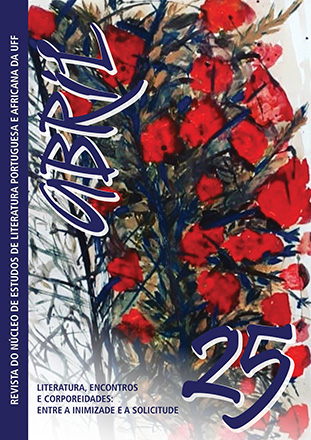How to respond to an “accumulated wound”: about memory work in the poetry of Conceição Lima
DOI:
https://doi.org/10.22409/abriluff.v12i25.40740Keywords:
Conceição Lima, Memory, FutureAbstract
“1953”, a poem from A dolorosa raiz do micondó, by Conceição Lima, approaches the Batepá Massacre, an event that is recorded in the history of São Tomé and Príncipe as a milestone for the imagination of a collective identity, related to the struggle for liberation of the country from colonial rule. It is a traumatic event, whose violence Lima’s poetry works to ensure it will not be forgotten, shedding light on wounds that are part of a national memory. Wounds of a similar nature are also addressed in other poems by the author, such as in the section of O País de Akendenguê entitled “Os fantasmas elementares”. Having in mind the transit between the violence of Batepá and the action of those whose legacy can point ways to the future, I intend to show some of the dialogues that are established in Lima’s poetry, projecting a world with more space for justice and solidarity rather than enmity.
Downloads
Downloads
Published
How to Cite
Issue
Section
License
Copyright (c) 2020 ABRIL – NEPA / UFF

This work is licensed under a Creative Commons Attribution-NonCommercial 4.0 International License.
I authorize the journal Abril - NEPA/UFF to publish the paper of my authorship/responsibility that I now submit, in case it is accepted for online publication.
Moreover, I declare that this contribution is original, that it was not submitted to any other editor for publication, and I sign the present declaration attesting the truth of all its contents.
The copyright of the works published at the virtual space of the journal Abril - NEPA/UFF are automatically entitled to the journal. Their total or partial reproduction is conditioned to the authors' citations and publication data.

Abril is licensed under a Creative Commons - Attribution-NonCommercial 4.0 International (CC BY-NC 4.0).









